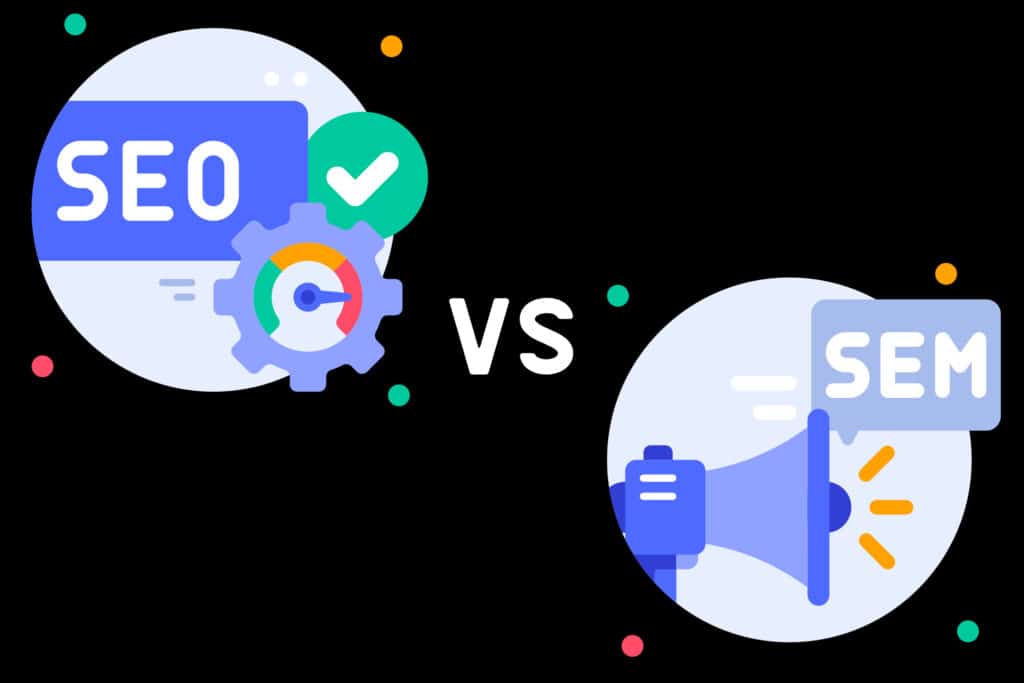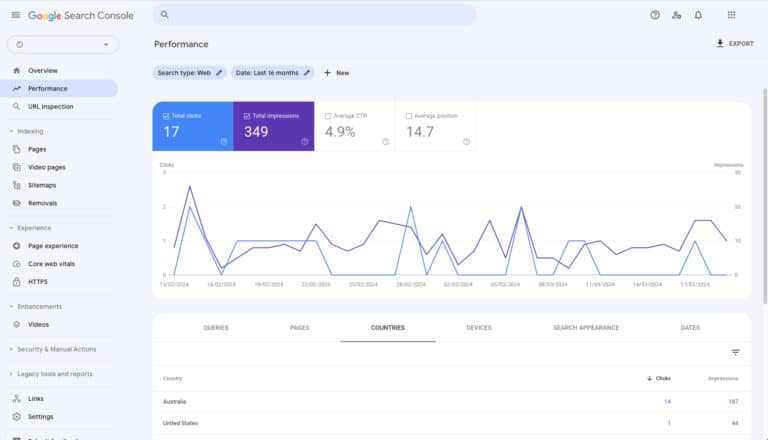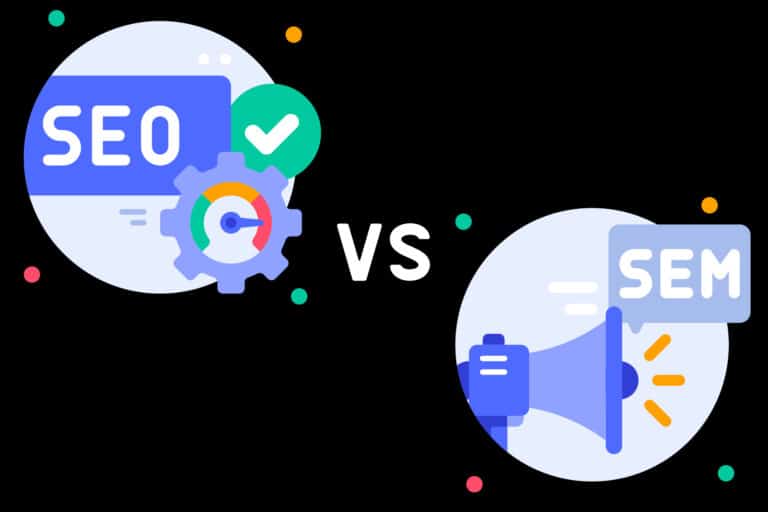In the ever-evolving landscape of digital marketing, understanding the difference between search engine optimisation (SEO) and search engine marketing (SEM) is crucial for driving targeted traffic, increasing online visibility, and ultimately, achieving business success. Are you leveraging both strategies to their full potential?
In this article, we’ll dive deep into the basics, key differences, similarities, and real-world examples of SEO and SEM, to help you make informed decisions and develop a winning digital marketing strategy.
Understanding SEO and SEM: The Basics
As the foundations of digital marketing, SEO and SEM play vital roles in helping businesses reach their target audiences online. While SEO focuses on improving organic search rankings, SEM encompasses both organic and paid strategies to enhance performance and visibility on search engine result pages (SERPs).
Any digital marketing strategy benefits from a clear understanding of the distinctions between these two concepts.
What Is SEO?
SEO offers advantages for long-term visibility by optimising a website’s content and structure for organic ranking in search results, a process that requires time to yield substantial results.
While SEO may take time to show significant results, it offers long-term benefits for businesses looking to establish a strong online presence.
Moreover, SEO is cost-effective due to the lack of upfront costs and the ability to be implemented in-house with minimal resources. The costs involved are typically in investing in a professional or tools to assist.
What Is SEM?
Search engine marketing (SEM) covers a broader scope, incorporating SEO and paid advertising strategies like search engine advertising and pay-per-click (PPC) to enhance visibility and direct targeted traffic to a website.
SEM allows businesses to rank at the top of SERPs through paid ads, such as Google Ads, which typically appear above organic search results. This enables businesses to achieve rapid results, adaptability, and precise targeting, making SEM an effective tool for testing new tactics, directing traffic to a sale, or increasing traffic during slower times.
Key Differences Between SEO and SEM
Despite the shared goal of increasing website visibility, SEO and SEM vary in numerous ways. The primary distinction between the two is the nature of the traffic they generate. SEO focuses on organic traffic, while SEM involves both organic and paid strategies to drive traffic.
Furthermore, the costs and investments required for SEO and SEM differ significantly, with SEO being more cost-effective but requiring time and effort, while SEM necessitates a budget for paid advertising campaigns.
Organic vs. Paid Traffic
SEO targets organic traffic – visitors that reach a website via unpaid sources, predominantly through SERPs. Organic traffic is a form of free traffic generated through inbound marketing and SEO efforts.
Conversely, SEM’s paid traffic pertains to web traffic sourced from paid promotions or advertisements like Google Ads or Facebook Ads. The primary distinction between SEO and SEM, in this case, is that SEO centres around organic traffic, while SEM involves both organic and paid approaches to drive traffic.
Cost and Investment
SEO can be free or cost-effective but requires time and effort to build and see results. It does not necessitate a budget for keyword bidding, unlike SEM, which does. In contrast, SEM requires a budget for paid advertising initiatives, with costs varying depending on factors such as industry, ad network, and campaign management. Most ad spend budgets range from $1000 to $10,000 per month for small to medium-sized businesses.
Integrating both SEO and SEM allows businesses to strike a balance between long-term growth through organic traffic and immediate results through paid advertising campaigns.
Timeframe for Results
Achieving results with SEO takes time, as it focuses on optimising a website’s content and structure to rank organically in search results. On average, it takes approximately two years to attain a first-page ranking on Google through SEO.
Conversely, SEM, mainly through paid advertising campaigns like PPC ads, can generate almost immediate results. This makes SEM an ideal option for businesses seeking quick visibility and a faster return on investment.
Similarities and Overlapping Strategies
Despite their differences, SEO and SEM share some common ground in their approach to digital marketing. Both strategies rely on effective keyword research to target relevant search queries and attract the right audience. Additionally, audience targeting is crucial for both SEO and SEM to ensure content and ads reach the intended demographic.
Furthermore, ongoing testing and optimisation are necessary for both strategies to adapt to changing algorithms and improve performance.
Keyword Research
Both SEO and SEM benefit significantly from keyword research, which assists businesses in identifying the keywords and phrases people utilise when searching for their products or services. By accurately targeting these keywords, businesses can boost their search engine rankings and become more visible to potential customers.
Utilising keyword research tools such as SEMrush and Ahrefs can provide data on search volume, competition, and related keywords, allowing businesses to select keywords with high search volume and low competition for optimal results.
Ongoing Testing and Optimisation
In the face of ever-evolving search engine algorithms, both SEO and SEM necessitate ongoing testing and optimisation. To adapt to these changes and maintain or enhance online visibility and rankings, businesses must regularly audit their website’s SEO and SEM performance, address any issues, and monitor analytics data.
By doing so, companies can identify areas for improvement, make necessary adjustments, and optimise their content’s positioning in search engine rankings.
When to Use SEO or SEM: Choosing the Right Strategy
The choice between SEO and SEM hinges on considerations like budget, timeline, and marketing goals. SEO is advantageous for providing long-term visibility, increasing organic traffic, and being cost-effective. In contrast, SEM offers rapid results, adaptability, and precise targeting through paid advertising initiatives.
By evaluating these factors, businesses can make informed decisions about whether to focus on SEO or SEM, or integrate both strategies for maximum impact.
Benefits of SEO
SEO offers advantages for long-term visibility by optimising a website’s content and structure for organic ranking in search results, a process that requires time to yield substantial results. Some advantages of SEO include:
- Higher click-through rate (CTR) than with paid ads, as organic results are often more trusted than ads
- Long-term visibility and sustained effort leading to consistent organic traffic
- Cost-effectiveness compared to paid advertising
- Improved user experience and website usability
- Increased brand credibility and trust
While SEO may take time to show significant results, it offers long-term benefits for businesses looking to establish a strong online presence.
Moreover, SEO is cost-effective due to the lack of upfront costs and the ability to be implemented in-house with minimal resources.
Benefits of SEM
Conversely, SEM provides immediate results, flexibility, and targeted precision through paid advertising campaigns. Businesses can purchase targeted ad space at the top of SERPs, enabling them to be seen by users actively searching for relevant keywords or phrases. This can lead to immediate traffic and results, making SEM a more effective strategy than other digital marketing tactics such as SEO.
Factors to Consider
Budget, competition, and desired outcomes are key factors to weigh when choosing between SEO and SEM. SEO may be more suitable for businesses with a limited budget or in less competitive markets, as it can provide cost-effective, long-term organic search rankings.
SEM may be more advantageous for businesses seeking immediate visibility and a faster return on investment, particularly in highly competitive markets. By analysing these factors, businesses can make informed decisions about which approach will deliver the best results for their specific needs.
Combining SEO and SEM for Maximum Impact
Melding SEO and SEM can enhance visibility, broaden audience reach, and boost overall marketing performance. Both strategies should be viewed as two components of an overarching digital strategy that promotes visibility, traffic, and conversions from search engines.
The Synergy of SEO and SEM
SEO and SEM work in harmony, with SEO laying a robust foundation for successful SEM campaigns. A well-structured SEO strategy ensures that the website is optimised to attract high-quality traffic and improve conversion rates, while SEM enables businesses to acquire search visibility directly through paid ads.
By combining the strengths of both strategies, businesses can achieve top organic search engine rankings while simultaneously driving visibility through paid ads.
Tips for Integrating SEO and SEM
For successful SEO and SEM integration, businesses should synchronise their keyword strategies, utilise data from both channels, and keep a vigilant eye on performance. Producing high-quality content that is consistent with relevant content and keywords can generate more qualified leads for both organic and paid traffic.
Furthermore, evaluating and updating content regularly can help businesses:
- Monitor and analyse performance
- Recognise which keywords and strategies are effective
- Make required adjustments to optimise their content’s positioning.
In conclusion, understanding the differences between SEO and SEM is crucial for any digital marketing strategy. By effectively combining the strengths of both approaches, businesses can maximise their online presence, drive targeted traffic, and achieve long-term success.
At 5 Twelve, we specialise in both SEO and Google Ads. We create tailored packages for businesses across Australia to help them achieve digital marketing success. If you’d like to discuss how SEO or Google Ads can benefit your business, get in touch today.





